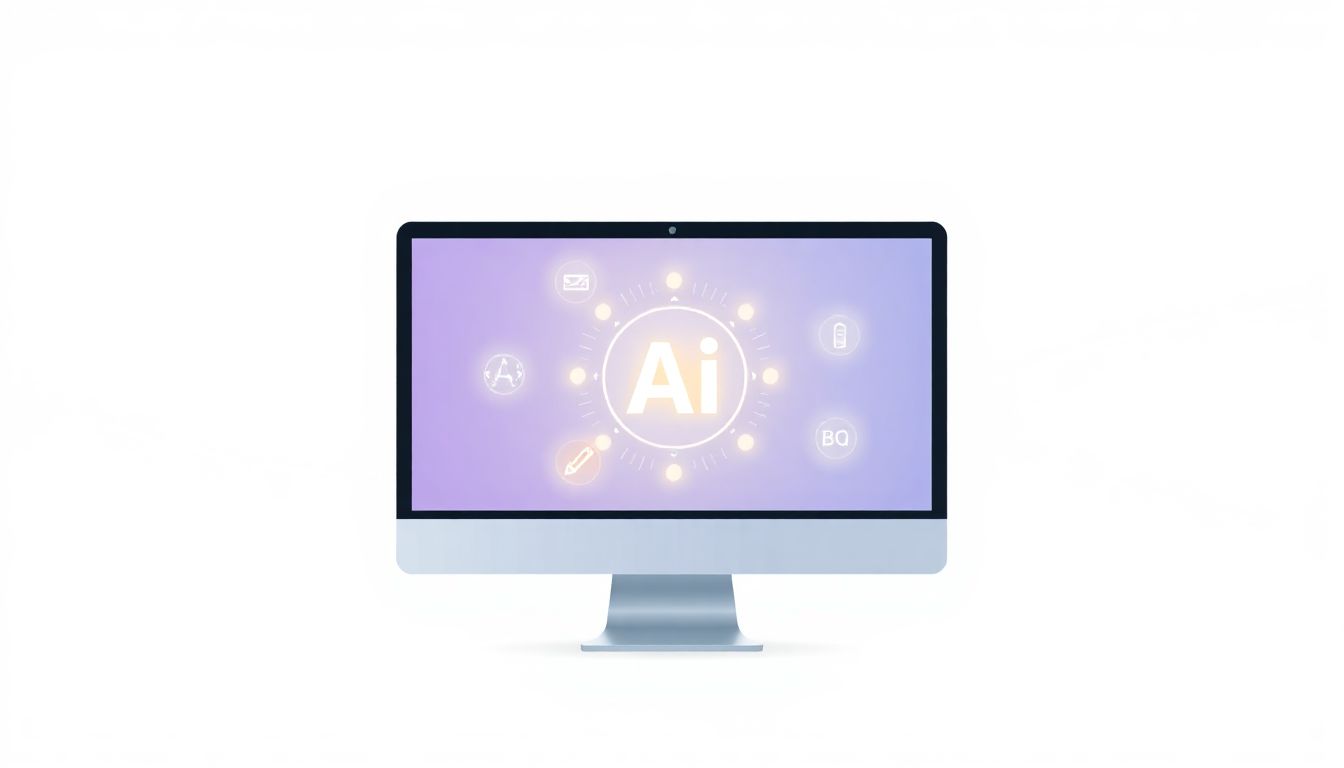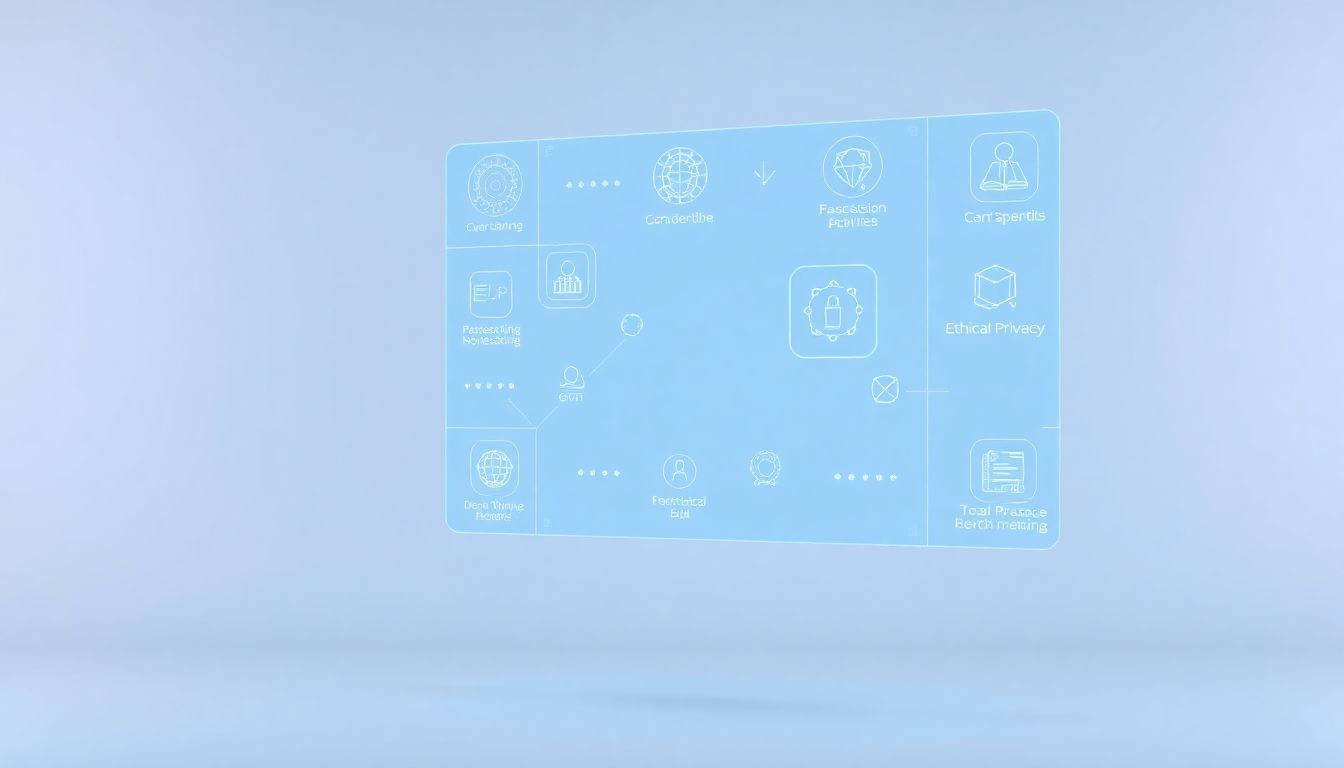Many of us wonder how to find the best AI tools out there and make sure they’re worth our time. If you keep reading, I’ll show you how ratings can help you pick smarter options tailored to your needs. Plus, I’ll share simple tips on recognizing top features and using market sites to get the most out of these helpful tools. Stick with me, and you’ll be ready to choose AI tools with confidence.
Key Takeaways
Key Takeaways
- In 2025, look for AI tools with high user ratings (above 90/100), good reviews, and strong industry reputation. Examples include GitHub Copilot, ChatGPT, and Synthesia.
- Choose AI tools based on your goals, checking ratings, community support, verified performance, and how well they integrate with your existing systems.
- Ratings help you avoid wasting money on low-quality tools. Trust verified high ratings as they show reliability and good performance.
- Stay aware of emerging AI trends like specialized industry solutions, improved conversational AI, and focus on data privacy and ethics to select future-proof tools.
- For small businesses, affordable yet powerful AI options like Copy.ai, ManyChat, and Zapier can improve marketing, customer service, and automation efforts.
- AI tools are changing work by automating routine tasks. Skills related to overseeing AI and working alongside it will become more valuable.
- Avoid blindly trusting ratings; ensure the tool matches your needs, and check recent reviews and real user feedback before deciding.
- Maximize AI tools’ worth by exploring their features, customizing workflows, staying updated, and engaging with community support for best results.

1. What Are the Best AI Tools in 2025?
In 2025, the AI landscape is more crowded than ever, but some tools stand out because of their usefulness and ratings from users. Right now, the hottest tools include options like GitHub Copilot for coding, which scored 93/100 and is ranked #2 among top AI tools.
Other popular choices are ChatGPT for general conversation and content creation, and Synthesia for creating AI videos quickly.
According to the latest data, the global AI market is worth about $391 billion, with a growth rate of roughly 35.9% annually, showing how much these tools are becoming part of everyday business and personal use.
Tools that excel in data analysis, automation, and creative projects tend to rank higher in ratings because users depend on them for efficiency and quality.
To spot the best tools in 2025, look for those with high user ratings, solid reviews, and strong industry reputation, such as those featured in rankings on sites like Axis Intelligence and Synthesia.
2. How to Choose the Right AI Tools for Your Needs
Picking the right AI tool is easier when you know what to look for and how it aligns with your goals. First, define what you want to achieve—whether it’s content generation, coding help, or data analysis.
Second, check the ratings and reviews—tools rated above 90/100 tend to be more reliable and user-friendly. For example, GitHub Copilot’s high score suggests strong performance for developers.
Third, consider the platform’s support and community. Tools with active user bases and customer support like Synthesia or ChatGPT are easier for newcomers to adopt.
Fourth, look for verified performance data—especially if you’re buying or selling AI solutions. Platforms like sellaitool.com make it simple to verify revenue and usage metrics, so you get what you pay for.
Lastly, think about integration—your chosen tool should seamlessly work with your existing systems to save time and headaches.
3. Why AI Tool Ratings Matter for Users and Buyers
Ratings give you an at-a-glance idea of whether an AI tool is worth your time and money. A high rating—say, 90+ out of 100—means most users are happy with how it performs, features, and support.
For buyers, ratings help avoid wasting cash on subpar tools or scams. If a platform like sellaitool.com displays verified ratings, you can trust that these numbers reflect real performance and user experiences.
High ratings often correlate with better functionality, regular updates, and reliable support—important factors if you want a tool that lasts and keeps up with your needs.
Lower-rated tools might be tempting because of low prices, but they usually come with hidden bugs, poor documentation, or inconsistent results—costing you more in the long run.
Ultimately, checking ratings helps you make smarter, more confident decisions, whether you’re buying AI tools to build your business or trying new ones for personal projects. The data is there to guide you, so don’t ignore it!

11. Emerging Trends in AI Tools for 2025
By 2025, AI tools are becoming more specialized, making it essential to stay updated on new developments.
Tools like GitHub Copilot continue to dominate coding, while new entrants focus on niche markets.
One noticeable trend is the rise of AI-powered decision-making platforms that help businesses crunch big data faster.
AI will also become more integrated into everyday devices, making smart assistants more capable and context-aware.
Interoperability is another emerging focus, with platforms emphasizing seamless integration across different tools and ecosystems.
Expect more AI solutions that are tailored to specific industries, like health care, finance, or even education.
OpenAI’s ChatGPT keeps improving its conversational abilities, making it more useful for customer support and training.
Finally, the emphasis on ethical AI and data privacy will shape how future tools are built and rated—expect higher transparency and compliance features.
Keeping an eye on these trends can help you pick tools that will remain useful, rather than becoming obsolete quickly.
12. The Best AI Tools for Small Businesses
Small businesses can’t always afford enterprise-level AI, but there are plenty of affordable options that pack a punch.
For content marketing, tools like Copy.ai and Creato are great for generating social media posts and ads with minimal effort.
Customer service can be improved with chatbots like ManyChat or Intercom, which have high ratings and easy setups.
If you want to analyze customer feedback, look into platforms like Helpar, offering quick insights without a steep learning curve.
Automation tools such as Zapier allow small teams to connect apps and automate repetitive tasks.
For email marketing, AI-powered platforms like Mailchimp come with smart segmentation and personalization features.
Using rated tools with user reviews helps small businesses avoid wasting money on unproven solutions and find reliable, scalable options.
Remember, a high rating usually means better support and more regular updates, which is especially important for smaller teams.
Pick tools that fit your budget, streamline your workflow, and help you connect with customers more effectively.
13. How AI Tools Affect the Future of Work
AI tools are reshaping jobs by automating routine tasks and freeing up time for more strategic thinking.
According to recent ratings, many professionals now rely on AI for data analysis, with tools rated above 90/100, like ChatGPT, becoming integral in daily workflows.
Expect an increase in hybrid roles that combine AI expertise with traditional skills—think of it like working alongside AI rather than fighting it.
Some tasks, such as content writing or basic coding, will be handled predominantly by AI, which means workers need to focus on oversight and creativity.
Industry-specific AI tools will also create new niche jobs—like AI trainers or algorithm auditors—to ensure systems work properly.
Organizations are prioritizing AI literacy, so employees familiar with top tools and ratings will have a competitive edge.
Democratization of AI means more people can access powerful tools that were once limited to specialists, changing the job landscape entirely.
Learning how to evaluate and select high-rated AI solutions now can help future-proof your career or team.
In short, AI is not replacing humans but shifting how we work, emphasizing skills that machines can’t do, like empathy and complex decision-making.
14. Common Mistakes to Avoid When Relying on AI Tool Ratings
One big mistake is blindly choosing tools based solely on high ratings without considering your specific needs.
A tool rated 93/100 might excel in fields completely different from yours, so always match features to your goals.
Second, ignoring recent reviews can be costly; a tool used to have good ratings but has lost performance due to poor updates.
Check the date of ratings and user comments—what was true last year might not be anymore.
Relying solely on popularity metrics, like web traffic or survey rankings, can be misleading—look for verified user feedback instead.
Watch out for fake reviews or paid promotions that inflate scores; platforms like sellaitool.com help verify real performance data.
Avoid tools with inconsistent ratings across different sources, which can signal unreliable performance.
Don’t forget to test a trial version or demo before fully committing—real-world usability is key.
Finally, keep in mind that the cheapest or highest-rated isn’t always the best—balance cost, support, and longevity when making your choice.
By avoiding these mistakes, you can pick AI tools that truly add value to your work or business.
15. How to Maximize the Value of High-Rated AI Tools
The first step is to thoroughly explore all features and integrations available in your chosen tool.
Many high-rated options like Synthesia offer tutorials and user guides—make use of these resources.
Next, tailor the tool to your workflow—use automation and customization to fit your specific needs rather than sticking to defaults.
Training yourself or your team on best practices can boost productivity and reduce errors.
Regularly check for updates and new features, as developers of top-rated tools often roll out improvements that can further benefit you.
Engage with community forums or support channels—high-rated tools usually have active user bases sharing tips and solutions.
Integrate multiple AI solutions wisely—use ratings and reviews to align complementary tools for a smoother workflow.
Monitor your results consistently—set KPIs to see how AI improves your processes and make data-driven adjustments.
Be patient: mastering an AI tool takes time, but the payoff in efficiency and quality makes it worthwhile.
Remember, the key is to see these tools as ongoing partners in your work, not just one-off solutions. Proper utilization of high-rated AI tools can transform your productivity for the better.
FAQs
The top AI tools in 2025 include those specializing in content creation, coding, productivity, and multimedia generation. These tools offer advanced features, user-friendly interfaces, and integration options to help users meet various digital needs effectively.
Identify your goals, evaluate features, check compatibility with your workflows, and read reviews. Comparing ratings and user feedback helps ensure you choose AI tools that match your skills and requirements effectively.
Ratings offer insights into a tool’s performance, usability, and reliability. They help buyers compare options quickly and make informed decisions based on real user experiences and overall popularity.
AI tools automate repetitive tasks, provide intelligent insights, and assist in content creation, freeing up time for more strategic activities and speedier project completion.